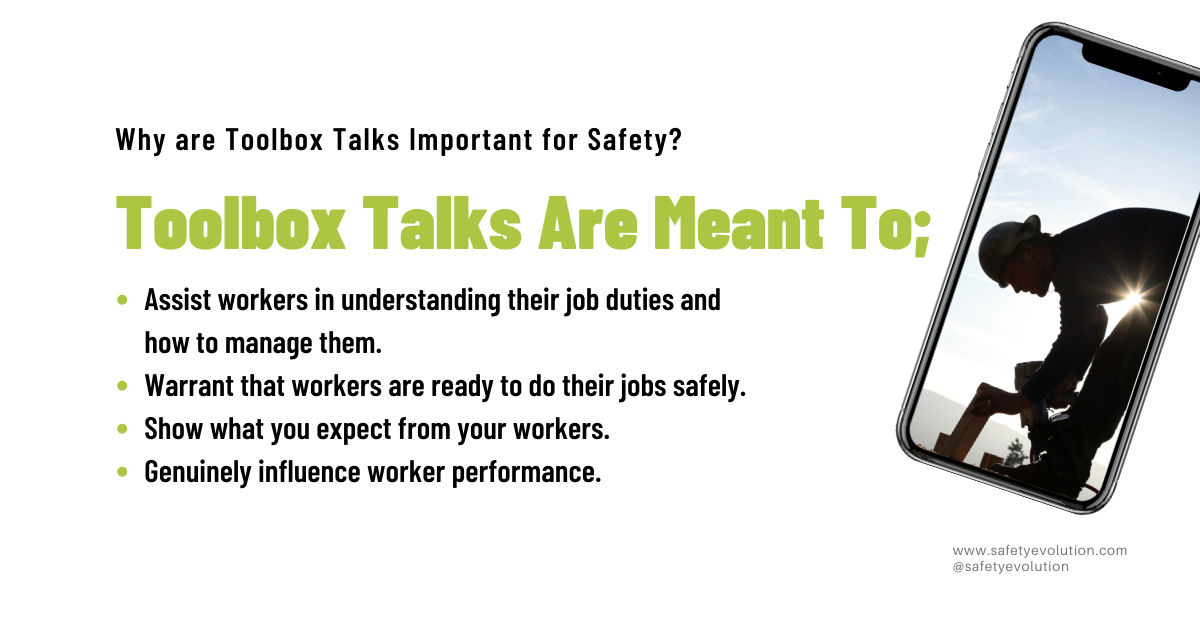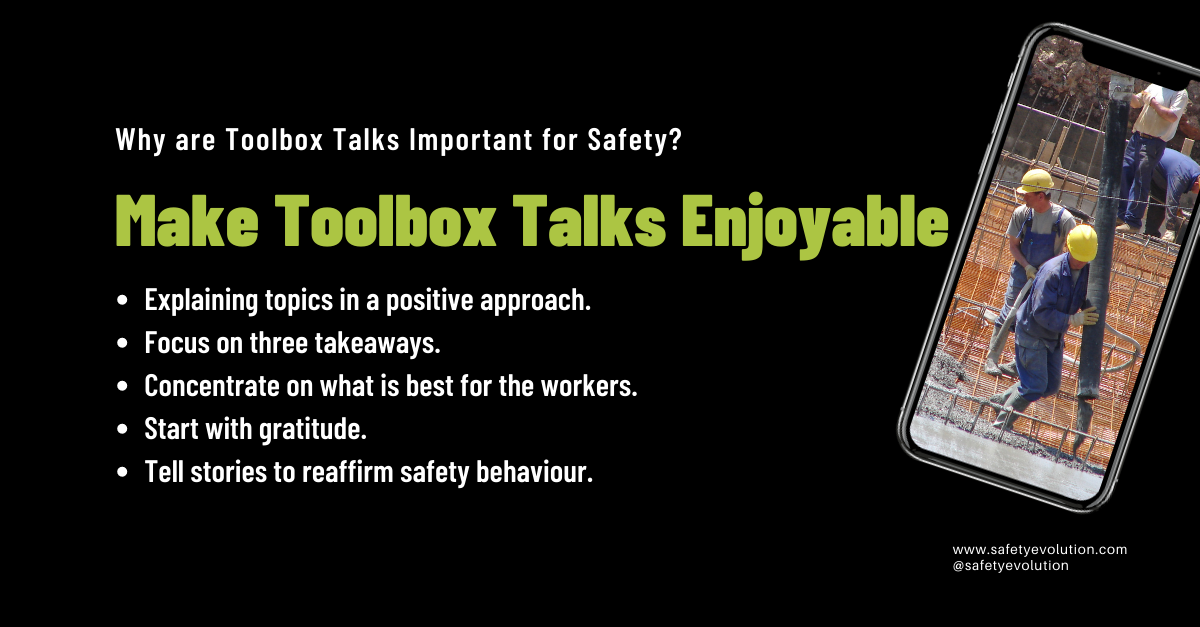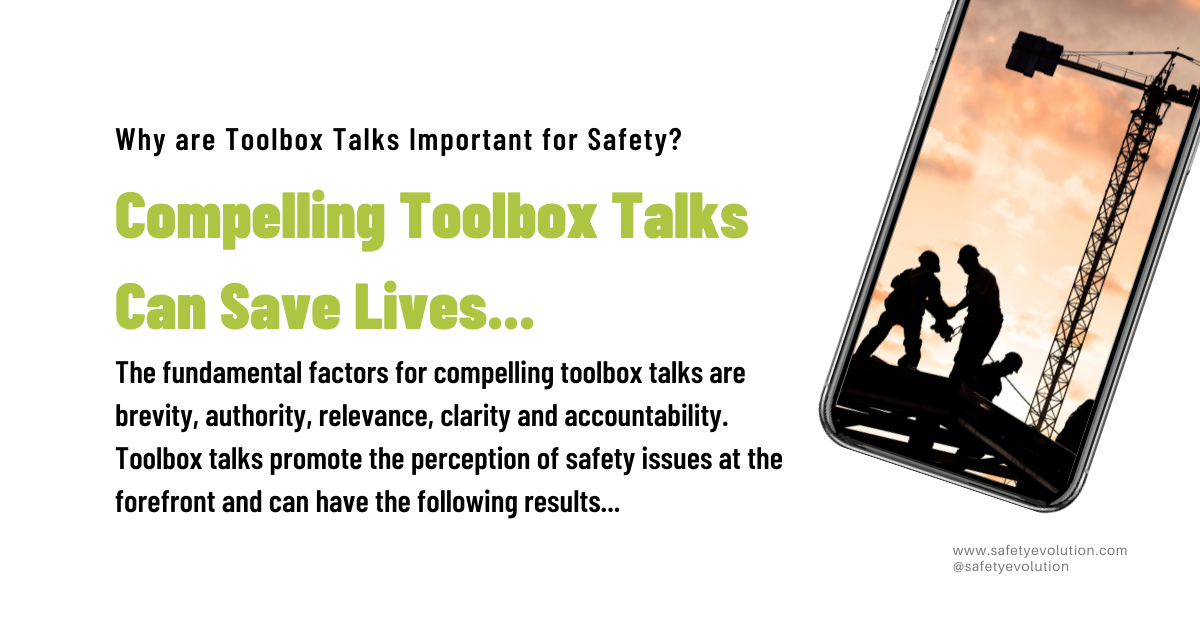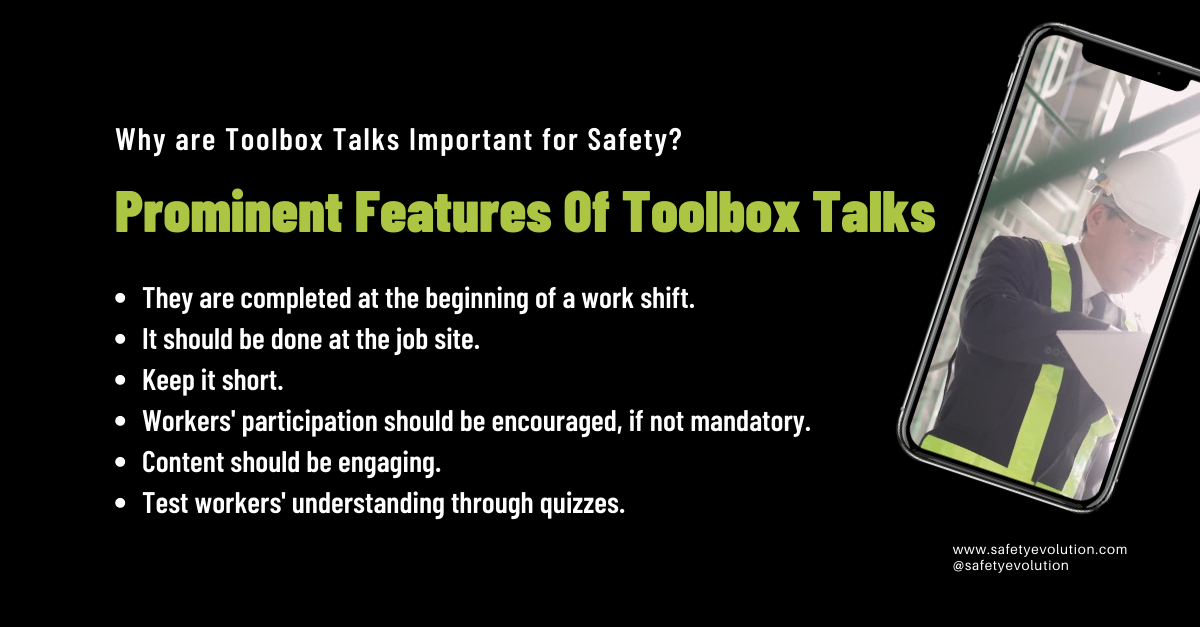A toolbox talk is an informal way to educate your workers overall about safety. Toolbox talks are focused on a particular safety issue and are meant to raise awareness for workers to keep safety top of mind. They also help stay compliant with OSHA and Occupational Health and Safety for keeping your workers informed - Toolbox Talks are the easiest way to ensure that your employees are taught to recognize and avoid unsafe conditions in their work environment.
Unlike regular training sessions, Toolbox talks must be short to reinforce safety training and information on a safety topic. Toolbox talks occur at the job site before the start of a job or work shift. Toolbox talks need to be regular; the frequency of meetings will depend on the site's size, nature, and location. However, data shows that daily is the best option.
Toolbox talks cover safety topics related to specific jobs or tasks. Meetings are generally short and include topics such as work-related work-space hazards and safe work practices.
Toolbox talks are a refresher and keep employees informed of important health and safety information.

Toolbox Talks Are Meant To;
- Assist workers in understanding their job duties and how to manage them.
- Warrant that workers are ready to do their jobs safely.
- Show what you expect from your workers.
- Genuinely influence worker performance.
Details of toolbox talks need to be recorded and kept on file to prove that you're doing your job educating and informing your workforce. It is essential to record dates and times, workers who consumed the information and proof through quizzes.

Make Toolbox Talks Enjoyable
Toolbox talks should keep your workers not only informed but also enjoyable:
- Explaining topics in a positive approach.
- Focus on three takeaways.
- Concentrate on what is best for the workers.
- Start with gratitude.
- Tell stories to reaffirm safety behaviour.
These will help improve the effectiveness, engagement and journey of the workers.

Compelling Toolbox Talks Can Save Lives
The fundamental factors for compelling toolbox talks are brevity, authority, relevance, clarity and accountability. Toolbox talks promote the perception of safety issues at the forefront and can have the following results:
- Promotes safety awareness as workers get actively involved in safety topics and reduce safety risks.
- Includes workers in safety rules, equipment, and preventive practices and urges the worker to follow standard operating procedures.
- Provides information to the workers on accident causes and how they can protect themselves.
- Accentuates planning, preparation, supervision and documentation.
- Helps when reviewing industry standards, company policies and procedures.
- Encourages workers to discuss topics and add in their experience with others in the workplace.

Prominent Features Of Toolbox Talks
- They are completed at the beginning of a work shift.
- It should be done at the job site.
- Keep it short.
- Workers' participation should be encouraged, if not mandatory.
- Content should be engaging.
- Test workers' understanding through quizzes.
You can find specific examples of toolbox talk topics in our Ultimate Guide to Toolbox Talks which has an entire year's worth of Toolbox Talks ideas.
To summarize, toolbox talks provide a valuable and effective method of communicating and involving the employees while reinforcing safety throughout the workforce, which can significantly enhance safety culture.
The cost of implementing a toolbox talk system is minimal, under 10 minutes a week, and the benefits include more inclusive awareness, with the potential to reduce incident rates, downtime and equipment damage and save a life.
Download this free package of Safety Talks and be prepared for all your Safety Meetings.

Sign up below to receive our weekly newsletter with helpful safety content including weekly toolbox talks!